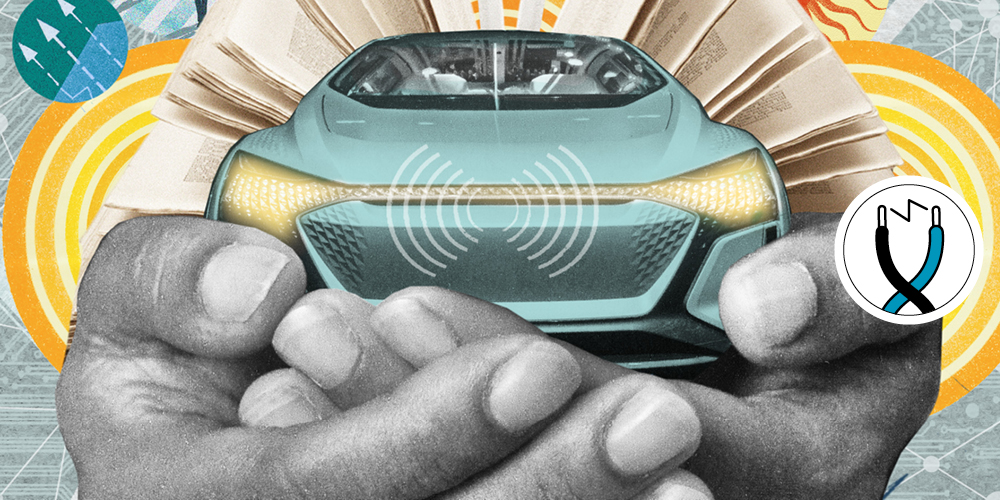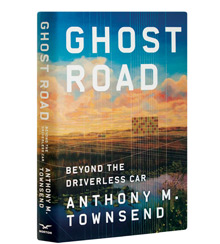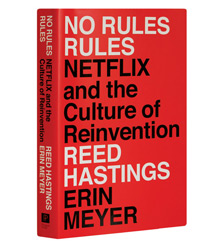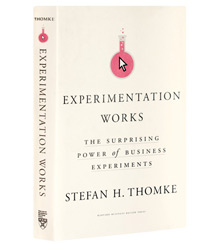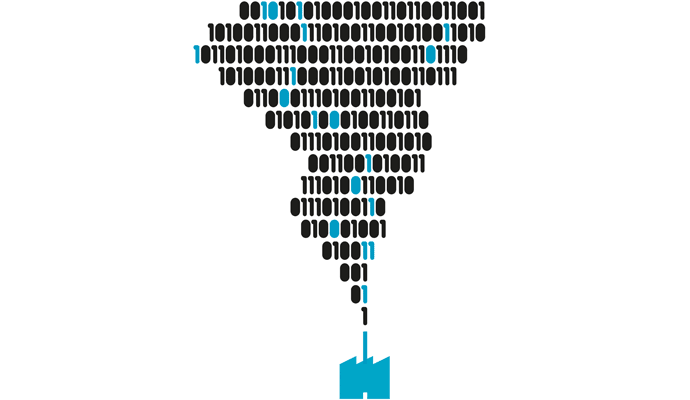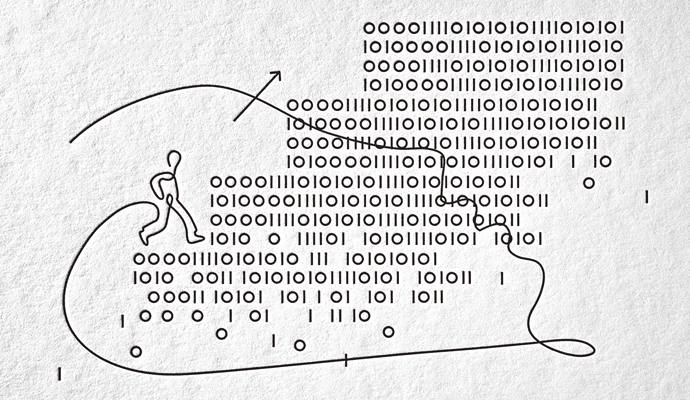Best Business Books 2020: Technology & innovation
Failure and the root of invention
Anthony M. Townsend
Ghost Road: Beyond the Driverless Car (Norton, 2020)
Reed Hastings and Erin Meyer
No Rules Rules: Netflix and the Culture of Reinvention (Penguin Press, 2020)
Stefan H. Thomke
Experimentation Works: The Surprising Power of Business Experiments (Harvard Business Review Press, 2020)
*A TOP SHELF PICK
Stories of technological innovation often focus on singular, heroic visionaries — the Steve Jobses and Elon Musks of the world — who come up with brilliant, fully formed ideas and then shepherd them into reality, never wavering in their quest for perfection. But more often than not, the true story of technology and innovation is messy, rather than clean, a story of failures that only eventually lead to success. “Failure and invention are inseparable twins,” Amazon CEO Jeff Bezos has said. This year’s best business books about technology and innovation describe, and even celebrate, the messiness and uncertainty. In so doing, they offer up important lessons about what real change requires.
In Anthony M. Townsend’s Ghost Road: Beyond the Driverless Car, the innovation in question is autonomous driving, and the stakes, as Townsend sees them, could not be higher. Autonomous vehicles (AVs), he argues, will eventually represent “our most intense and intimate encounter with artificial intelligence in the physical world.” Townsend, urbanist-in-residence at Cornell Tech and an expert on smart cities, suggests that by 2050 “most human-driven cars will be gone.” This is open to question. Even as huge amounts of capital are being poured into AV research — US$80 billion just in 2017 and 2018 — there are fewer than 1 million self-driving vehicles of any kind on the road right now. The installed base of human-driven cars is immense (280 million in the U.S. alone), and still growing. But when self-driving cars reach a critical mass, “There is no area of social and economic life that will escape the AV’s disruptions,” Townsend writes.
Townsend is not another in a long line of hype merchants who have spent the past decade promising that self-driving vehicles were just around the corner. Ghost Road offers up an exhilarating picture of the ways in which autonomous vehicles might transform our lives for the better, saving time and lives, reshaping cities, and helping combat climate change. But the author is also keenly aware of the risks and costs such a future could bring, and of the possibility that AVs will instead usher in a bleaker, more dystopian tomorrow. Townsend notes that the choices that businesspeople, engineers, politicians, and ordinary citizens make — deliberately or unconsciously — will determine that future.
What will tomorrow’s vehicles look like? The most common expectation is that they will look a lot like the cars we have today, and we’ll use them in much the same way. We’ll live in “self-driving suburbs,” and travel to work alone (as three out of four Americans did before the pandemic). But the work of driving will be outsourced to AI. Highways will be full of pods of self-driving cars, each carrying an individual cocooned comfortably inside, the AVs communicating with one another to keep traffic flowing.
Townsend hopes this future doesn’t materialize, largely because it wouldn’t take advantage of the really transformative aspects of autonomous driving, which he calls specialization and (somewhat oddly) materialization. Specialization means that instead of just self-driving cars, we’re going to see an explosion in the number and kind of AVs: small “conveyors” that can navigate crowded sidewalks to make local deliveries; bigger “mules” that can park themselves on street corners to hold packages for pickup and accept returns; AV shuttles; and self-driving taxis, bicycles, and motorcycles. AVs won’t, in other words, just change the way we get to work or the store — they’ll remake the fabric of everyday life.
Townsend argues that AVs’ greatest impact won’t be moving people — it will be moving stuff. (This is what he calls materialization.) AVs will make shipping and delivery much cheaper and more efficient, as autonomous vehicles, big and small, silently traverse the streets day and night. They will accelerate the death of traditional retail, diminish the advantage of giant companies like Walmart, and transform even the food business. (Why bother to cook at home if you can get a hot meal delivered in minutes from a ghost kitchen around the corner?)
What’s not to like? Well, AVs will rely on, and generate, enormous amounts of data about how we live, where we go, and what we buy. Determining who will own this “data exhaust” — and who will be able to monetize it — will have enormous consequences for the economy. Simply leaving the answer up to the market, Townsend argues, won’t suffice. And there’s a meaningful risk that an AV future will end up with what Townsend calls “robot-powered transportation monopolies.” Right now, a small number of companies exercise enormous power over our journeys online precisely because of their ability to capture our data exhaust. Readers will finish Ghost Road wondering how to prevent the same thing from happening with our travels through the physical world.
Leaders in the stream
If Ghost Road is a book about managing the social consequences of innovation, No Rules Rules: Netflix and the Culture of Reinvention is a book about managing — or, perhaps, enabling — innovation, period. Coauthored by Netflix CEO Reed Hastings and INSEAD business professor Erin Meyer, it is the rare book by a corporate executive that is both engaging and insightful. Perhaps that’s because it is structured as a kind of back-and-forth between the two authors, with Hastings laying out a management principle, explaining its origins and its logic, and then Meyer analyzing and sometimes critiquing the idea and looking at how it actually plays out at Netflix.
In No Rules Rules, it becomes clear that Netflix has figured out how to construct a corporate culture that fosters risk-taking and pushes responsibility downward in the organization, thus encouraging innovation. When Hastings talks about that culture, he places an enormous amount of importance on talent, and what he sees as Netflix’s insistence on hiring only the best of the best. But although the book’s discussion of the top strategies for finding and keeping high performers is interesting, its most valuable lessons about innovation lie elsewhere, in the strategy that Hastings calls “freedom with responsibility.”
The tension inherent in this phrase captures something important about how Netflix does business. Most of its employees actually are, by corporate standards, free. The company famously has no vacation policy — employees can, in theory, take vacations whenever they want. The expense policy: Employees are simply advised to treat the company’s money as if it were their own. Those who abuse the freedom (like the person who ran up $100,000 in vacation trips on the company’s dime) are relieved of their responsibilities.
By freeing employees from having to fret about such things as receipts and vacation days, Hastings argues, the company makes it easier for them to devote their brainpower to thinking about the stuff executives really want them thinking about. Similarly, Netflix pushes a lot of decision-making responsibility down the corporate hierarchy; even low-level executives can sign sizable deals without having to get their higher-ups to sign off. In principle, that lets people focus on whether they think something is a good idea, rather than whether their boss will think it’s a good idea. Hastings puts it this way: “If you hope for more innovation on your team, teach employees to seek ways to move the business forward, not ways to please their bosses.”
Netflix’s offer of freedom and responsibility works, Hastings argues, only because people are subject to constant feedback from those around them. In Netflix’s culture, people routinely face open, direct criticism of their ideas, presentations, and performance — from their boss, yes, but also from peers and subordinates. (One person Meyer interviewed recalls an email she sent Hastings after one meeting, criticizing the way he had spoken dismissively to another executive. He wrote back, agreeing.) Indeed, when Meyer was giving presentations and doing interviews inside the company, people would regularly offer up public criticisms of things they thought she could be doing better. (“I started to get queasy,” Meyer writes of the time she was called out in the middle of a presentation.)
Although Netflix strives to ensure that people deliver their criticism constructively and respectfully, it all makes for a stressful workplace. Hastings argues that the benefits outweigh the costs. Diverse perspectives improve decision-making. But there’s also a more subtle benefit: Regular feedback makes employees recognize that work is rarely perfect and that it can often be improved. This feedback instills an ethos of continuous improvement and a certain tolerance of failure.
The company prides itself on being willing to let people go when it decides they’re no longer at the top of their game. But making a bet that goes wrong is not one of the things that will get them fired. When employees make bad bets, in fact, they typically “sunshine” them rather than bury them, writing public memos explaining what happened and what lessons they learned. Hastings explains, “It’s critical that your employees are continually hearing about the failed bets of others, so that they are encouraged to take bets (that of course might fail) themselves.” In fact, some of the most interesting moments in No Rules Rules have to do with employees talking openly, and surprisingly honestly, about their mistakes.
As Hastings acknowledges, this strategy of embracing failure isn’t a great idea for every business — if you’re running a nuclear power plant, or a hospital operating room, you want people obsessed with making sure everything works perfectly. But in a business that depends on a constant flow of new ideas, comfort with failure is essential. No Rules Rules provides an intriguing template for how to get there.
Try, try again
There’s a meaningful overlap between No Rules Rules and the best business book of the year on technology and innovation, Stefan H. Thomke’s Experimentation Works: The Surprising Power of Business Experiments. Thomke, a professor at Harvard Business School, was one of the pioneers in studying how companies could use controlled experiments to improve their decisions, and in 2003 he wrote a book titled Experimentation Matters. In Experimentation Works, he offers a rigorous and engaging look not just at why experiments matter, but at “the systems, tools, organizing principles, values, and behaviors” businesses need to make experiments genuinely useful.
Even though the cost of running experiments, both online and offline, has dropped sharply, wide-scale experimentation is still relatively unusual as a tactic. The biggest tech companies — Microsoft, Amazon, Facebook, and Google — all run more than 10,000 online experiments a year, involving tens of millions of users. And online travel behemoth Booking.com, which Thomke examines in detail in the book, has basically built its entire business around experiments, performing what Thomke estimates is more than 25,000 of them a year. More traditional companies — Nike, Walmart, State Farm — have embraced experimentation, albeit on a much smaller scale. But lots of companies are still barely dipping their toes into the experimentation pool, unconvinced of the value and leery of the perceived risks.
The skepticism is easy to understand. Experimentation is often seen as just throwing stuff at the wall and seeing what sticks. It’s radically different from traditional management, in which information is channeled to decision-makers at the top who then hand down their wisdom. Experimentation requires humility, because running thousands of experiments a year is an admission that there’s a lot you don’t know about your business. And it requires a willingness to fail, as, according to Thomke, between 80 and 90 percent of experiments fail to find any positive effect.
Experimentation requires humility, because running thousands of experiments a year is an admission that there’s a lot you don’t know about your business.
Embracing experimentation also demands that companies rethink what innovation means. Businesses hunger for disruptive, nonlinear innovations that introduce entirely new technologies, transform product categories, or shake up business models. But most innovations are actually humble, small improvements in user experience or workflow or the way a website looks. These are the kinds of innovations that experiments are great at testing. And Thomke convincingly argues that such high-velocity incrementalism is tremendously valuable. He writes, “Most progress is achieved by implementing hundreds or thousands of minor improvements that can have a big cumulative impact.”
In the simplest sense, Thomke says, companies need to embrace the scientific method, and what can be called an Edisonian approach to innovation: formulating hypotheses based on observation, designing experiments to test those hypotheses, and analyzing the results to see whether they’re statistically meaningful. Most of the time, they won’t be. But even a negative result is informative. When Edison himself was asked why so many of his experiments didn’t result in anything, he responded: “Results? Why, man, I have gotten lots of results! I know several thousand [ideas] that won’t work.”
In order to employ the scientific method, though, leaders need to be willing to embrace uncertainty, and they must recognize that good ideas can come from anywhere in the organization. At Booking.com, for instance, pretty much anyone can run an experiment. Thomke suggests that as a general rule, the best ideas for incremental innovations come from people closer to the front line. A Microsoft employee suggested in 2012 that increasing the size of ad headlines on Bing might be beneficial, a seemingly trivial change that boosted revenue by 12 percent annually.
Although Experimentation Works is academic in tone, and sometimes dry, it’s replete with interesting examples of small changes that, when tested, had big impacts (and vice versa). Those changes, Thomke argues, are often counterintuitive — if you don’t run the experiments, you’ll likely never think about implementing them.
If there’s a problem with experimentation as an ethos, it’s not that it’s inefficient, but rather that it may not be inefficient enough. Experimentation is something of a grind — a commitment to it will mean trying lots of small changes. That’s great for incremental innovation. But disruptive innovation is more likely to come from what Jeff Bezos calls “wandering,” when employees have the time and mental space to just let their minds roam free. Thomke recognizes this dilemma. Companies, he says, have to be “ambidextrous” in their approach to innovation. The question for innovative companies, then, remains how to use both of their innovation hands at once.


